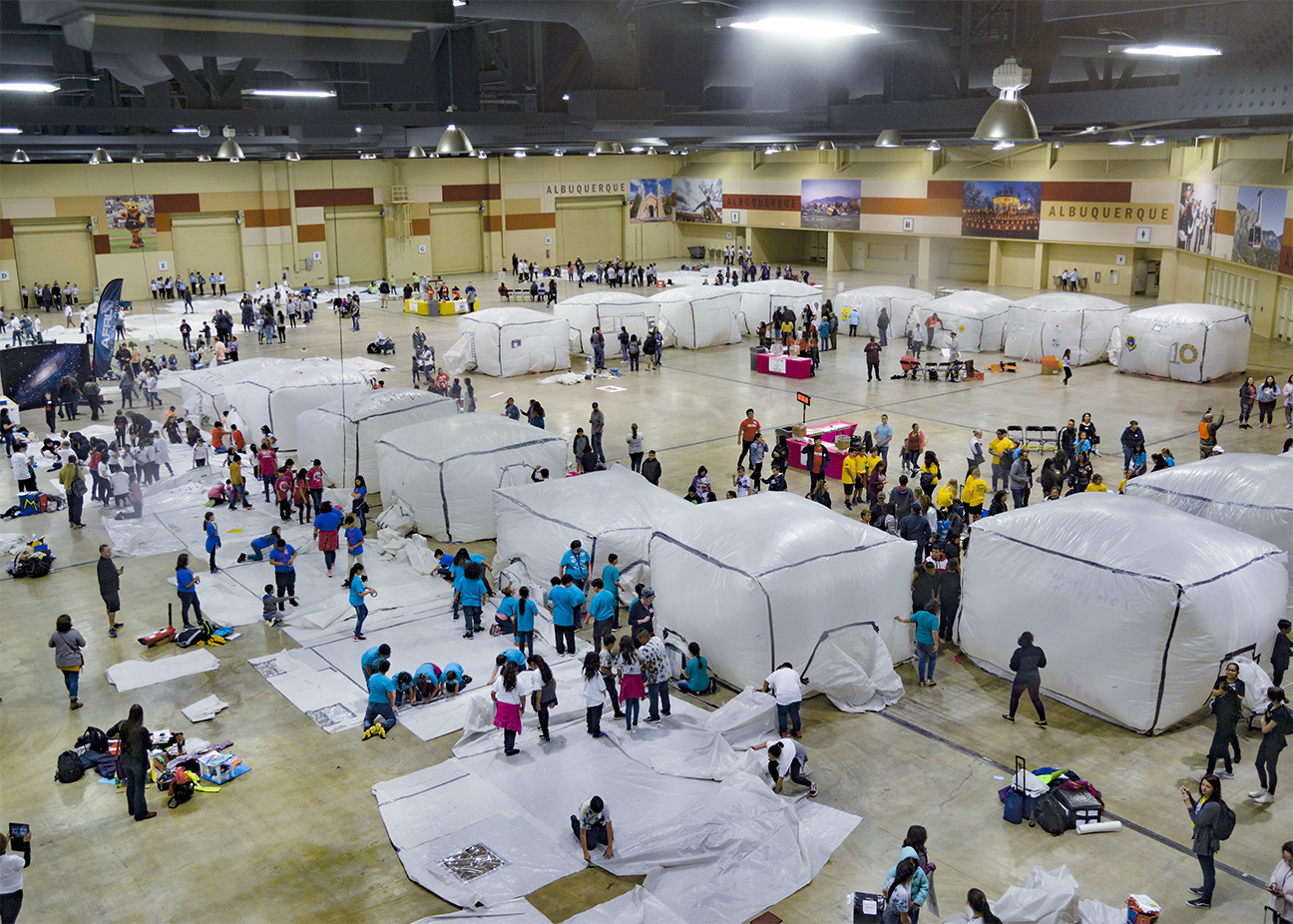Adapting A Mission to Mars – A Bright New Future for AFRL STEM Academy
KIRTLAND AIR FORCE BASE, N.M. — The 25th Annual Mission to Mars was the latest in the growing list of events that have been impacted by the COVID-19 pandemic.
Since the event began, Mission to Mars has grown from having one to two hundred kids participating from across New Mexico, to having more than one thousand participating students in 2019. Each year, the event has a 10-12 week course of activities and tasks that students are assigned and required to complete before the “link-up day” that was slated to be held on April 17 of this year.
The Air Force Research Laboratory NM STEM Academy, program, once known as the AFRL La Luz Academy, founded the event, which has continued to grow into an annual highlight for students and teachers across New Mexico.
The event incorporates several facets of curriculum for students. Using language arts and technology skills. students conduct planetary research to discover what would be required to maintain life within the environment of Mars. Elements of art are involved in creating unit mission-patches. Additionally, there science engineering elements present in working within the limits and resources that may be available.
During link-up day, students and teachers from across the state meet the volunteers and employees from STEM Academy and other New Mexico organizations to build habitats and enact their plans to sustain life on Mars. The event was historically held at the Albuquerque Convention Center, and has been a successful collaboration in creating interest in STEM for New Mexico students.
With the recent pandemic impacting events, in order to adhere to safety and physical distancing—to prevent the spread of the novel COVID-19—it seemed that the 2020 Mission to Mars would be canceled. Luckily, STEM Academy Director Ronda Cole-Harmon and her team decided to take the setback as an opportunity to learn and develop new ways to reach students.
“It became a great opportunity to reexamine the way we’ve always done things, and appreciate the things that have made this successful, but also find new ways to deliver that information that can be more engaging, more efficient, and further-reaching than what we were doing before,” Cole-Harmon said.
STEM Academy transitioned the event into a completely online version of the Mission to Mars curriculum. The team utilized video, online assignment submissions, and culminated in a Zoom livestream event.
“On the one hand COVID-19 canceled our big event, but on the other hand, it got us to start thinking about how we might do this more effectively going forward,” Cole-Harmon said. “[In the future] we might make this more interactive for schools in the time leading up to the event via online mediums. Then there’s the opportunity to increase reach. Maybe in 2021, we have students in California, and Michigan, and New Mexico all working on the same culminating event.”
Approximately 150 students participated in the online Mission to Mars. Students were from different New Mexico cities, different states, and even a participant from England. Though the number of participants was a fraction of what the turnout had become over the years, the reach across different demographics
was largely increased.
“We can have students from around the world interacting with STEM professionals from AFRL and getting excited about the research they could eventually delve into if they were to pursue a career in the STEM field,” Cole-Harmon said. “It was fun, and it was a good opportunity for everyone involved to try
something new. We still have room to improve because this is something we’ve never done before.”
Amid the changes that the new reality has presented society, it has become ever easier to lose sight of goals. STEM Academy hopes to remind their students that it has never been more important to find ways to grow and connect.
“It’s so important during this time, for students to have a voice and maintain a connection with others,” Cole-Harmon said. “Well, we’ve discovered this new way to connect. We can all get complacent in the things we do day-to-day, and sometimes life can shake us up in ways we would never have expected. Through that, I think we might have found a new outlook on how we do things. If the kids can’t come to us, we can find ways to go to them.”
AFRL STEM Academy has worked to inspire students and teachers alike, to think outside the realm of what has been done. They hope to inspire others to learn from challenges and seek out innovative methods of thinking.
“STEM Academy has always made it a goal to connect kids with STEM careers early on,” Cole- Harmon said. “Building on some of the lessons that we’ve learned can really help shape a bright new future for the direction of our STEM outreach activities.”

Student inflate habitats during the 2019 Mission to Mars at the Albuquerque Convention Center May 10, 2019. The Air Force Research Laboratory New Mexico’s STEM Outreach branch put on the mission, with more than 1,300 fifth-grade students from schools across the Albuquerque area and New Mexico taking part in the massive science and engineering experiment. (U.S. Air Force photo by Jim Fisher)
